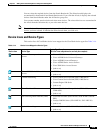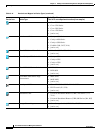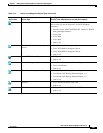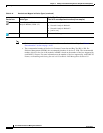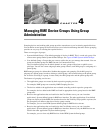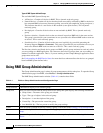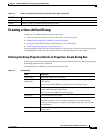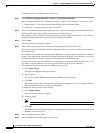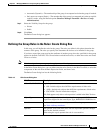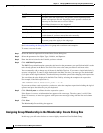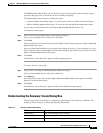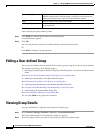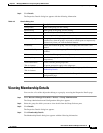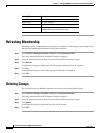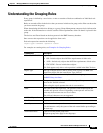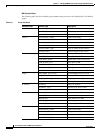
4-5
User Guide for Resource Manager Essentials 4.1
OL-11714-01
Chapter 4 Managing RME Device Groups Using Group Administration
Creating a User-defined Group
• Automatic (Dynamic)—The membership of the group is recomputed each time the group is invoked.
• Only upon user request (Static)—The membership of the group is recomputed only when an explicit
request is made, using the Refresh option (Resource Manager Essentials > Devices > Group
Administration).
Step 7 Select the Visibility Scope for the group:
• Private
• Public
Step 8 Click Next.
The Rules:Create dialog box appears.
Defining the Group Rules in the Rules: Create Dialog Box
In this step, you will define the rules for the group. The rules you define in this phase determine the
contents of the group. The rules you specify here determine the devices to be included in the group.
If you have created the group copying the attributes of another group, the rules specified for that group
appears in the Rule Text field. You can retain these and add more rules, or delete these rules and create
a new set of rules.
Note All rules assigned to a parent group also apply to any of its subgroups.
In the Rules:Create dialog box, you can either enter the rules directly in the Rule Text field, or select the
components of the rule from the Rule Expression fields, and form a rule.
The Rules:Create dialog box has the following fields:
Ta b l e 4-3 Rule Create Dialog box
Field/Buttons Description
OR, AND, EXCLUDE Logical operators.
• OR—Include objects that fulfill the requirements of either rule.
• AND—Include only objects that fulfill the requirements of both rules.
• EXCLUDE—Do not include these objects.
This field appears only after a rule expression is added in the Rule Text box.
Object Type The type of object (device) that is used to form a group. All RME rule
expressions begin with the same Object Type, RME:INVENTORY:Device.
Vari ab le Device attributes, based on which you can define the group.
See Table 4-6Group Attributes.
Operator The operator to be used in the rule. The list of possible operators changes
based on the Variable selected.
When using the equals operator the rule is case-sensitive.



